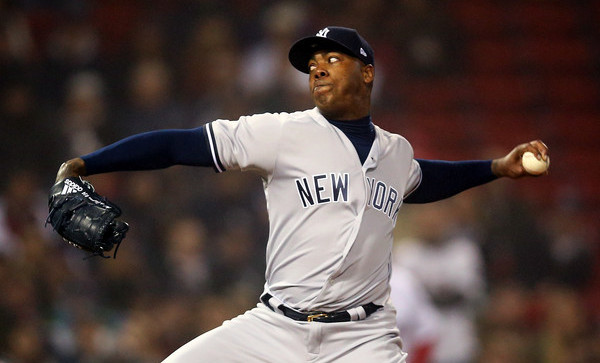
Ever since 2013, expectations for the Yankees have been ratcheted down in preseason discussion. Their roster construction from then on limited their outlook to wildcard contenders rather than division favorites, as they’d been for the 15-20 years before then, excepting 2008 (a brief digression: The ’08 Yankees won 89 games despite getting 30 starts from the combination of Darrel Rasner and Sidney Ponson; that’s incredible).
While spectacular–or even good–results were hard to count on, one thing was pretty sure: the Yankees would have a good bullpen. It helps when your relief corps is led by Mariano Rivera, Rafael Soriano, David Robertson, Dellin Betances, Andrew Miller, and Aroldis Chapman over the last 20 or so years, but after that, whether it was Joe Girardi pushing the right buttons, the team cycling through and replacing options quickly and efficiently, some combination of those things, or bullpen fairy dust, the Yankees always did well in relief. This year, things have not followed that pattern.
Before the All Star Break, Betances and Tyler Clippard had well-publicized meltdowns. It seemed just about every reliever was taking his turn in coughing up winnable games for the Bombers during their futile June and early July. Things came to a head on Friday night in Boston when Chapman blew a save in grand fashion, walking in the winning run after experiencing some combination of bad luck and bad performance, a bit of a microcosm of his season.
From certain angles, things look good for Chapman. He hasn’t allowed a home run all year. His K/9 is in line with his career norm. He’s got a 1.66 FIP. Then there’s the weird stuff. His ERA is sky high (for him) at 3.74. His strikeout percentage is down to 34.3 (which is still good!), way off from the 42.1% mark he’s had for his career; he hasn’t been under 40% since 2011. His strand rate–normally around 80%–is at 67.7%. His BABIP is .415, which seems insane for a guy who throws that hard (and has a career BABIP of .290).
That strand rate seems odd to me, so I checked out his splits with runners on and it turns out his K% is “only” 30%. It hasn’t been that low since 2011. Batters are hitting .277 against him when they’ve never hit over .186 in those situations. He also seems to be allowing much more hard contact and much less soft contact in those situations. That and the BABIP suggest a lot of flukiness in the runs he’s given up–excluding, of course, that awful walk to Andrew Benintendi on Friday night.
The underlying data, though, suggest some reasons to be concerned. Let’s start with velocity, which is an odd place to start considering how hard Chapman throws. This year, he’s hucking fastballs at a ridiculous 100.08 MPH on average; that’s absurd. Human beings shouldn’t be able to do that. What’s crazy is that it’s actually down a full MPH from the 101.08 mark he averaged in 2016. There are explanations–playoff hangover, time on the DL this year–but any time you see a drop like that, it’s a bit iffy. The tables also show that Chapman is getting slightly less horizontal movement on his slider this year than he was last year; Friday, he threw only fastballs in his outing, which seemed odd. More odd was that of 23 pitches, Chapman got just one swing and miss.
2017 has seen big drops in whiff/swing rate on Chapman’s pitches over where they were in 2016 and that is scary for any pitcher, especially one who’s going to be in big leverage spots. This helps explain the above trouble with runners on, too; if guys aren’t whiffing, they’re making more contact and they’re gonna get more hits and they’re gonna score more runs, etc. Indeed, Chapman’s contact rates are up, and have been trending in the wrong direction for a few years now. The only ‘comfort’ is that the jumps this year are so extreme that they should even out towards his career norms at some point (right?).
The first year of Chapman’s five year deal has been fraught with a lot of things, including frustration that the deal is even a thing. Now, there’s been a mix of injury, worse-than-normal performance, and a little bit of negative flukiness. There’s nothing we can do as fans but sit and wait for an adjustment. It’s in the hands of Chapman and the staff to make that adjustment. If there isn’t one to be made, though, and this is a sign of things to come, this may be a long, long five years.
Leave a Reply
You must be logged in to post a comment.